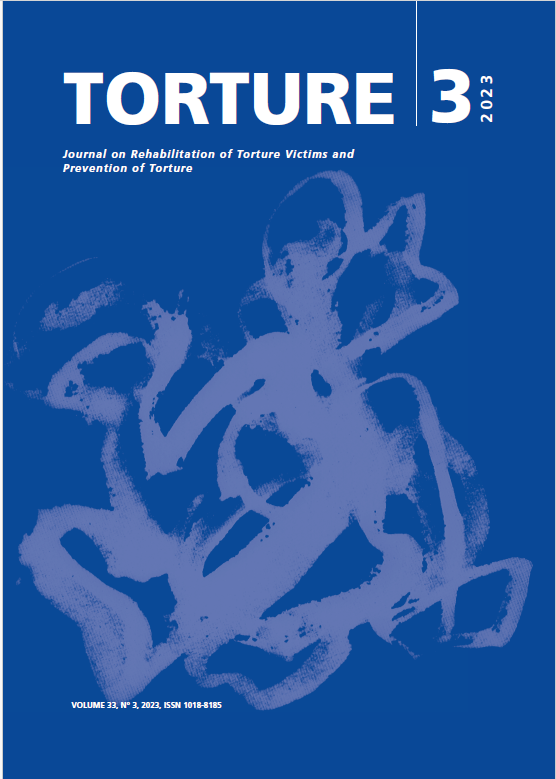Vol. 33 No. 3 (2023): Torture Journal: Journal on Rehabilitation of Torture Victims and Prevention of Torture

We take a look at the Russian invasion of Ukraine. Jana Javakhishvili introduces the concept of “substitutive trauma,” which refers to the utilisation of unprocessed collective traumatic experiences by political leadership to create shared feelings of victimhood and vengeful attitudes within a population. The analysis explores how a substitutive trauma-based psycho-political dynamic culminated in February 2022 in Russia’s war against Ukraine. The article argues that the community of traumatic stress professionals, studying and understanding macro-societal processes, can contribute to reducing and ameliorating such destructive psycho-political developments. Most of Jana’s reasonings can surely by applied to the situation in Gaza.
Lopatina et al., present an analysis of the impact of the Russian occupation on the activities of Berdyansk State Pedagogical University in Ukraine, explaining the different challenges faced by the university community under occupation, particularly emphasising human rights violations and academic freedom and institutional resilience mechanisms to manage to maintain classes despite the invasion.
In a qualitative study with survivors and legal practitioners, Rud et al. also present data on resilience, but in this case of victims of torture in Russia. They analyse law enforcement institutions and ways they challenge an individual’s resilience as torturing environments and how it is faced, regardless of the vulnerabilities of the individual, their social status and institutional context. It is a path-breaking study that provides fresh perspectives on a subject that has been scarcely addressed in the anti-torture field.
Also on resilience in torture survivors is the editorial, with reflections, learnings and ways forward in a field that lacks more scientific research.
The issue also addresses the topic of torturing environments. Alejandro Forero’s paper reviews prison overcrowding as ill-treatment or torture under international law, focusing on three aspects: minimum standards with respect to living space, the use of tools to establish the existence of harm caused by inhuman conditions of incarceration and some corrective, restorative measures for prisoners that innovative jurisprudence is introducing.
Stroppa presents the work of Physicians for Human Rights Israel and Antigone on an International Guiding Statement of Alternatives to Solitary Confinement, proposing global guidelines for reducing and overcoming the use of solitary confinement in prisons.
Finally, a research study presented by Barbieri et al. examines the prevalence of hallucinations in a sample of treatment-seeking trauma-affected refugees. It analyses the relative role of torture and some other interpersonal traumatic events (i.e., imprisonment, sexual assault, non-sexual assault) as well as PTSD severity and a range of socio-demographic variables in the emergence of hallucinations.
Additionally, Castilla conducts a brief review of the recently published General Comment No.1 of the Committee against Forced Disappearances in the context of migration as a new opportunity to re-humanise the management of migrations in all regions of the world.

